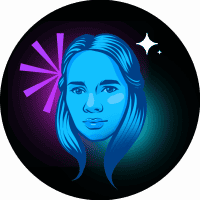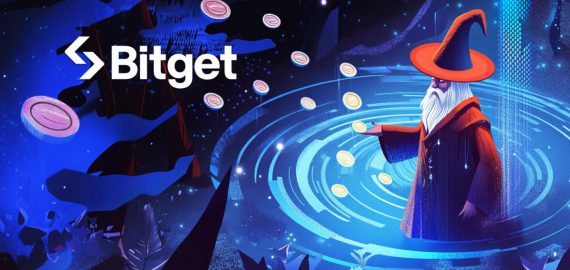Google Unveils Latest AI-Powered Tools: Bard, SGE, PaLM2, And More


In Brief
Google has introduced several new AI-powered tools and features at its annual I/O conference, including Search Generative Experience (SGE), Immersive View for Maps, and the “Magic Editor” in Google Photos.
The new version of Google Search, SGE, utilizes generative AI to provide more personalized responses to open-ended search queries.
Bard, another large language model released two months ago, has received updates and new features, including the ability to include images alongside text in prompts and coding upgrades.
Google has unveiled new AI features and an updated version of its core search product at its annual I/O conference in California. The company is incorporating more artificial intelligence into its search product to rival Microsoft’s Bing search engine, which has gained attention due to its use of OpenAI technology.
The new version, called Search Generative Experience (SGE), is designed to provide more nuanced and personalized responses to open-ended search queries. Google’s cloud division also uses generative AI to create human-like content based on past data and help shoppers search for specific products.

| Related: Enhance Your Conversational AI Experience with the Best Google Bard Prompts and ChatGPT Prompts. |
Google has also introduced Immersive View for Maps, a new feature that provides real-time information about weather and traffic on your route. In addition, it boasts the ability to calculate the quickest path in less than two seconds.
Moreover, Google Photos unveiled a new tool called the “Magic Editor” that enables users to modify various aspects of their photos. With the feature, users can alter the lighting of a scene, remove unwanted elements, and adjust positions within the image.
Google’s new PaLM 2 language model comes with improved capabilities in multilingual understanding, reasoning, and coding. It has been trained on text spanning over 100 languages, including scientific papers and web pages with mathematical expressions, and pre-trained on publicly available source code datasets. PaLM 2 excels in programming languages like Python and JavaScript, as well as generates specialized code in languages such as Prolog, Fortran, and Verilog.
What’s New With Bard?
Bard, the large language model released two months ago, has received updates and new features. Bard is becoming more visual, allowing users to include images alongside text in their prompts. Google Lens has been integrated into Bard to analyze uploaded images and provide creative captions.
Bard also introduces coding upgrades, such as source citations, dark theme, and an “export” button, allowing users to move Bard’s responses directly into Gmail and Docs. Google plans to integrate the capabilities of its other apps and services into Bard and to partner with other companies such as Adobe Firefly, Kayak, and Khan Academy.
Google emphasizes that Bard is still a nascent technology with limitations and that maintaining quality and local nuances is a priority.
Google Bard Versus SGE
Google recommends that people continue to use the traditional Google search to find information, including locating products to buy. On the other hand, Bard is an interactive chatbot that has a personality capable of holding conversations similar to humans. It’s designed to facilitate creative collaboration, like generating software code or composing a caption for an image.
Google announced that the Search Generative Experience would not be immediately available to U.S. consumers. Instead, interested individuals must sign up on a waitlist. During the trial phase, the company will assess the search results’ quality, speed, and cost-effectiveness.
Google shared on Wednesday that Bard is now available in 180 countries and territories without a waitlist. The company also intends to expand Bard’s support to 40 languages.
Read more:
Disclaimer
In line with the Trust Project guidelines, please note that the information provided on this page is not intended to be and should not be interpreted as legal, tax, investment, financial, or any other form of advice. It is important to only invest what you can afford to lose and to seek independent financial advice if you have any doubts. For further information, we suggest referring to the terms and conditions as well as the help and support pages provided by the issuer or advertiser. MetaversePost is committed to accurate, unbiased reporting, but market conditions are subject to change without notice.
About The Author
Agne is a journalist who covers the latest trends and developments in the metaverse, AI, and Web3 industries for the Metaverse Post. Her passion for storytelling has led her to conduct numerous interviews with experts in these fields, always seeking to uncover exciting and engaging stories. Agne holds a Bachelor’s degree in literature and has an extensive background in writing about a wide range of topics including travel, art, and culture. She has also volunteered as an editor for the animal rights organization, where she helped raise awareness about animal welfare issues. Contact her on [email protected].
More articles

Agne is a journalist who covers the latest trends and developments in the metaverse, AI, and Web3 industries for the Metaverse Post. Her passion for storytelling has led her to conduct numerous interviews with experts in these fields, always seeking to uncover exciting and engaging stories. Agne holds a Bachelor’s degree in literature and has an extensive background in writing about a wide range of topics including travel, art, and culture. She has also volunteered as an editor for the animal rights organization, where she helped raise awareness about animal welfare issues. Contact her on [email protected].

















































